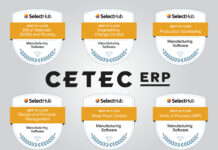Toolbox talks are an integral part of the manufacturing maintenance sector, serving as short, informal meetings focused on workplace safety and operational issues. These discussions provide crucial insights and guidance, tailored specifically to address the unique challenges and hazards encountered in a manufacturing environment.
Since they aid in fostering a culture of safety awareness, toolbox talks play a pivotal role in preventing accidents and ensuring a secure (and compliant) workplace.
This article delves into how these talks specifically tackle the multifaceted challenges of safety and compliance in the manufacturing maintenance realm. The goal is to help understand how toolbox talks not only raise awareness but also actively contribute to mitigating risks and adhering to stringent regulatory standards, thereby promoting a safer and more compliant workplace.
Toolbox Talks in Maintenance Safety
In manufacturing maintenance, workers are frequently exposed to a range of hazards. Electrical risks — including electrocution, short circuits, and sparks leading to fires — involve exposure to live wires or faulty electrical equipment, posing significant dangers.
Machinery malfunctions can lead to catastrophic accidents, especially with heavy or high-speed equipment. These include breakdowns, unexpected start-ups, or equipment failures causing injuries. Ergonomic injuries, often overlooked, arise from repetitive tasks or improper handling of equipment, lifting heavy items, or poor workstation design, and are known for leading to long-term musculoskeletal issues.
Some other, frequently occurring risks include:
- Chemical exposures: contact with hazardous substances causing health risks.
- Falls and slips: due to wet floors, uneven surfaces, or working from heights.
- Noise exposure: this leads to hearing loss from prolonged exposure to loud machinery.
Toolbox talks are instrumental in cultivating a robust safety culture, emphasizing preventive measures and proactive safety management. They enable teams to identify potential hazards and discuss practical solutions, such as proper use of safety gear or machinery operation protocols.
For instance, a toolbox talk could focus on the correct way to handle a new high-speed cutting machine, addressing both operational procedures and safety precautions, thereby reducing the risk of accidents and reinforcing a culture of safety vigilance.
 Compliance Challenges in Manufacturing Maintenance
Compliance Challenges in Manufacturing Maintenance
Compliance in manufacturing maintenance is a complex landscape, dominated by stringent standards like those set by OSHA and various local safety regulations. These standards cover a broad spectrum of issues, from equipment safety to employee training requirements.
For example, OSHA’s guidelines on hazardous energy control (lockout/tagout procedures) are crucial for maintenance personnel to understand and implement to avoid severe accidents. But, as stated earlier, the regulatory landscape includes an array of considerations:
- OSHA standards: meeting guidelines on hazardous energy control, machine guarding, and PPE usage.
- Local safety regulations: adhering to specific local or state safety and environmental standards.
- Environmental regulations: compliance with waste disposal and air quality standards.
- Fire safety regulations: ensuring adherence to fire safety protocols and equipment maintenance.
- Emergency response preparedness: preparing for accidents, natural disasters, or other emergencies.
- Training and certification requirements: ensuring all workers are appropriately trained and certified.
Toolbox talks are an effective platform to keep staff updated on evolving compliance standards and best practices in maintenance safety. Regularly including topics on recent regulatory updates or introducing new safety procedures ensures that all team members are informed and prepared.
One such talk could focus on new amendments to machine guarding regulations, explaining the changes and how they impact daily maintenance activities, ensuring that the team not only complies with the law but also adopts best safety practices.
Another iteration of a toolbox talk could focus on the latest updates in hazardous chemical handling and storage regulations. This session could detail how new labeling requirements and safety data sheet formats must be integrated into the maintenance team’s routines.
Discussing these changes helps ensure that team members are aware of the proper procedures for handling, storing, and disposing of chemicals, thereby not only complying with the updated regulations but also significantly enhancing workplace safety and reducing the risk of chemical-related incidents.
Implementing Effective Toolbox Talks
Effective toolbox talks are tailored to address specific safety and compliance needs unique to each maintenance team. This involves customizing content to reflect the particular machinery, machinery maintenance, other processes, and risks inherent in the team’s daily operations.
A team working with advanced robotic assembly lines would benefit from talks that focus on the safe interaction with automation and emergency protocols specific to such equipment. That’s why you must ensure topics are directly relevant to the team’s daily tasks and potential risks, and regularly update content to reflect changes in equipment, procedures, or regulations.
Use interactive methods like Q&A sessions, hands-on demonstrations, or group discussions to maintain engagement — incorporating real-life incident analyses can make sessions more relatable.
One of the many must-haves with toolbox talks is consistency — hold talks regularly, but avoid over-scheduling to maintain their effectiveness and perceived value. Also, try to actively seek feedback from attendees and use it to improve future sessions. This could involve modifying the format, content, or delivery based on employee suggestions.
To engage maintenance personnel effectively, toolbox talks should incorporate interactive elements like hands-on demonstrations or analysis of real-world incident case studies. This approach keeps the sessions engaging and provides practical, tangible learning experiences.
One example — a hands-on demonstration of the correct procedure to shut down a malfunctioning conveyor belt effectively reinforces the learning and ensures better retention and application of safety protocols.
Measuring Toolbox Talk Effectiveness in Maintenance
Key Performance Indicators (KPIs) are essential to measure the impact of toolbox talks on safety in maintenance operations. These metrics provide quantitative data to assess whether these talks are effectively reducing accidents and improving adherence to safety protocols.
These KPIs include:
- Incident rates: frequency and severity of workplace accidents and injuries.
- Near-miss reports: tracking incidents that could have led to accidents but were narrowly avoided.
- Compliance audit results: regular checks on adherence to safety and regulatory standards.
- Employee safety training completion: rate of employees completing mandatory safety training.
- Employee feedback and engagement: surveys and feedback mechanisms gauging employee participation and understanding.
- Toolbox talk attendance records: monitoring how many workers are actively participating in these talks.
A noticeable decrease in incident rates post-implementation would indicate a positive impact on workplace safety.
Obtaining and utilizing feedback from maintenance staff is crucial for the continuous improvement of toolbox talks. Methods like post-talk surveys, interactive feedback sessions, and observational feedback provide direct insight into the effectiveness of the talks.
Regular review meetings to discuss feedback results and observations can lead to adjustments in the talks, ensuring they remain relevant, engaging, and effective in addressing the evolving needs of the maintenance team.
The Final Piece in Your Safety and Compliance Puzzle
Toolbox talks are indispensable in enhancing safety and compliance in the manufacturing maintenance sector. Their role in fostering a culture of safety awareness, educating personnel on best practices, and ensuring adherence to regulatory standards cannot be overstated.
They serve as a critical component in the pursuit of a safer, more efficient, and compliant maintenance environment.
Maintenance managers and team leaders are encouraged to either adopt or refine their approach to toolbox talks, focusing on the long-term benefits they bring in terms of safety and compliance.
Continuously evolving these talks to meet the specific needs of their teams — and staying abreast of the latest safety standards and technologies — can significantly enhance the overall safety and efficiency of their maintenance operations.
By: Sanjay Murthi
 About the Author
About the Author
Sanjay Murthi works for SMGlobal. SMGlobal’s FastMaint CMMS software is a powerful & easy-to-use maintenance management software program used by customers worldwide to manage facility and equipment maintenance.












































